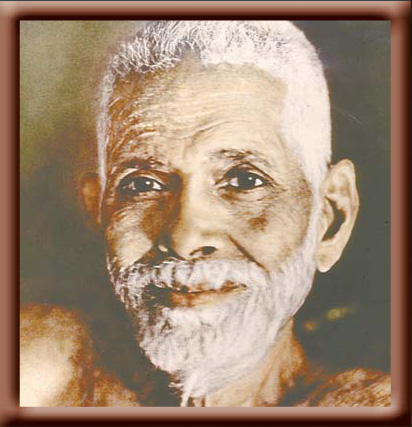“Who Am I?” A Strategy for Self-Realization
“Aconscious bliss ensues when one abides as the Self, by inquiring ‘What is the true import of I?’ This bliss is spontaneous, indestructible and limitless.” These are the words of Ramana Maharishi (1879–1950), the renowned sage of Arunachala, South India, whose widely popular approach to meditation is called Atma-vichara, or Self inquiry. It epitomizes the path of discovery propounded in the Advaita Vedanta teachings of the Smarta Sampradaya.
Ramana spoke little and defied all efforts to have his teachings distilled into a set of instructions for meditation, but much can be learned from the gems of wisdom that he did confer regarding the path of Self knowing. In the English translation of Upadesa Manjari (A Bouquet of Spiritual Instruction), published in 1939, the sage is asked: “What is the correct method of practice for the disciple to adopt and follow?” The answer: “In the first instance, it should be recognized that the Atman, or the Self, is not something existing separate and distinct from the seeker, which he has yet to obtain, as it were, from without. Considering further that there is nothing loftier or more sublime than the object of his quest, which is identical with himself, he that would earnestly try to attain Liberation should initially proceed to discriminate between what is permanent and abiding and what is not. By this discriminative insight, he should know beyond doubt and free from misconception what he really is, i.e., in what his real Being consists. Realizing thus his true and natural state, he should remain changeless, firmly established therein. This is the correct method of practice, or sadhana, and is called the Vichara Marga, which is pre-eminently instrumental in gaining direct and immediate knowledge of the Self.
“Jnana is the utter annihilation of the mind by making it realize its absolute identity with the Atman, or the Self, by incessant practice of dhyana (meditation) or vichara (inquiry in quest of the Self). Utter annihilation of the mind is synonymous with that state of pure Being in which all effort (either to control or to direct it, which is necessary only if the mind is wayward or in any way subject to the influence of mundane existence) has finally ceased. Those who have attained that state never swerve from it. What is called Mauna, or Quiescence, is verily that state of pure Being.

WELLING
“I am not the physical body, nor am I the five organs of sense-perception; I am not the five organs of external activity, nor am I the five vital forces, nor am I even the thinking mind.”
Ramana Maharishi

SHUTTERSTOCK
“To inquire, ‘Who am I that is in bondage?’ and to know one’s real nature is alone Liberation.”
“In sadhana, one should pay particular attention to the following points:
(a) “If the aspirant would only devote every minute spent in vain thinking about objects, which constitute the not-Self, in earnest inquiry in quest of the Self, he would, in a very short time, attain Self-Realization.
(b) “Until the mind obtains a firm and steady hold on the state of pure Being, practice of profound meditation tinged with religious emotion (bhavana) is essential, for, otherwise, the mind becomes an easy prey to wayward thoughts or is overcome by sleep.
(c) “The aspirant must not waste his time in an endless and vain repetition of such scriptural dicta as ‘Sivo’ham’ (the Supreme Lord am I) or ‘Aham Brahmasmi’ (I am Brahman), which is considered characteristic of nirgunopasana. Instead, the aspirant should, with the strength of mind he gains by such devout repetition, or upasana, practice Atmavichara, or investigation in quest of the Self even as he is, without the superimposition of such ideas as ‘I am Brahman,’ etc.
(d) “The excellence of the sadhana, or the method of practice, adopted consists essentially in not yielding, by every possible means, any scope for obsessing thoughts of any kind to enter into the mind.”
In his book Who Am I?, ca 1922, Sivaprakasam Pillai captured the famous discourse by that name which he heard Sri Ramana give twenty years earlier. Here are brief excerpts:
“Who am I? I am not the physical body, nor am I the five organs of sense-perception; I am not the five organs of external activity, nor am I the five vital forces, nor am I even the thinking mind. Neither am I that unconscious state of nescience that retains merely the subtle vasanas (latencies of the mind), being then free from the functional activity of the sense organs and of the mind, and being unaware of the existence of the objects of sense-perception.
“Therefore, summarily rejecting all the above mentioned physical adjuncts and their functions, saying, ‘I am not this; no, nor am I this, not this,’ that which then remains separate and alone by itself, that pure Awareness, verily am I. This Awareness is by its very nature Sat-Chit-Ananda (Existence-Consciousness-Bliss).
“By a steady and continuous investigation into the nature of the mind, the mind is transformed into That to which the ‘I’ refers, and that is verily the Self.
“Even when extraneous thoughts sprout up during such inquiry, do not seek to complete the rising thought, but, instead, deeply inquire within, ‘To whom has this thought occurred?’ No matter how many thoughts thus occur to you, if you would, with acute vigilance, inquire immediately, as and when each individual thought arises, as to whom it has occurred, you would find it is to ‘me.’ If, then, you inquire, ‘Who am I?’ the mind gets introverted, and the rising thought also subsides. In this manner, as you persevere more and more in the practice of Self-inquiry, the mind acquires increasing strength and power to abide in its Source.”
Our thanks to Master Nome of the Society of Abidance in Truth (www.SATRamana.org) for providing the citations from the teachings of Sri Ramana Maharishi for this Educational Insight.